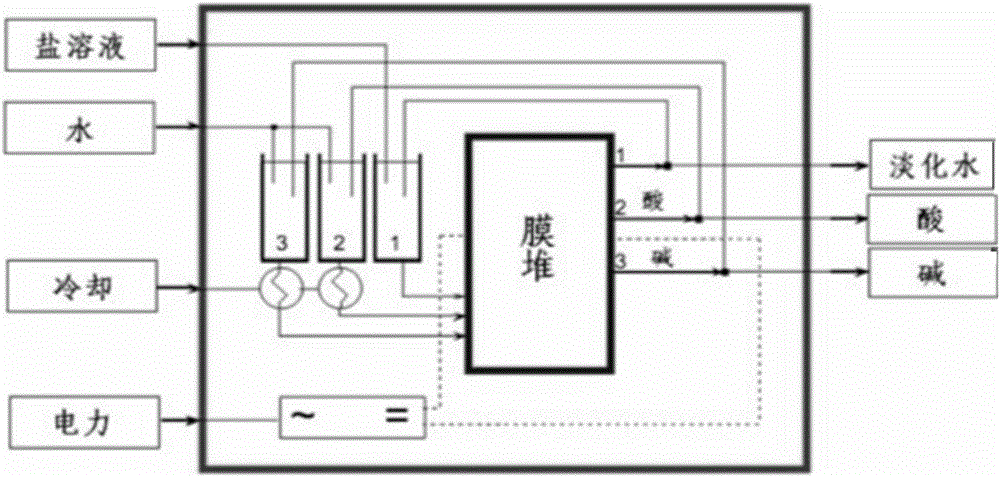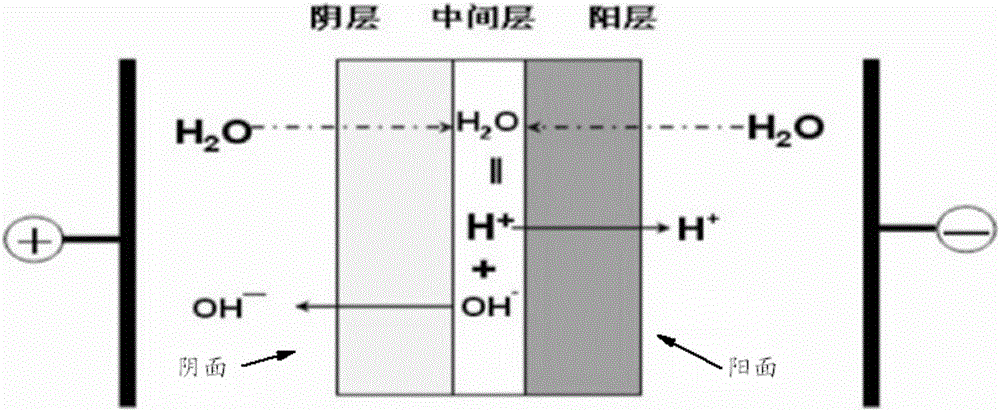Method for preparing halopropyl alcohol and propylene oxide
A technology of propylene oxide and halopropanol, which is applied in the field of preparing propylene oxide, propylene oxide, and halopropanol by the new halohydrin method, which can solve the problem of large production hazards, generation of dichloropropane, and environmental pollution, etc. question
- Summary
- Abstract
- Description
- Claims
- Application Information
AI Technical Summary
Problems solved by technology
Method used
Image
Examples
Embodiment 1
[0112] 1) Catalyst acid treatment: Soak TS-1 molecular sieve in hydrochloric acid with a mass fraction of 36% for 1 hour, then wash the catalyst with distilled water, and dry the catalyst for 6 hours at 40°C; among them, the synthesis of TS-1 The method refers to Example 1 of CN201410812216.8.
[0113] 2) Haloalcoholization: Add 70wt% concentration of hydrogen peroxide H 2 o 2 , HCl solution (hydrochloric acid) and propylene of 35wt% concentration, carry out chlorohydrinization reaction at the temperature of 45 ℃, wherein the hydrogen peroxide H of 70wt% concentration 2 o 2 , 35wt% concentration of HCl solution and propylene three flow should make H 2 o 2 The molar ratio of HCl to propylene is about 1.2:1.2:1. This gives the halohydrin, a mixture of 2-chloropropan-1-ol and 1-chloropropan-2-ol.
Embodiment 2
[0118] 1) Catalyst acid treatment: Soak TS-1 molecular sieve in hydrochloric acid with a mass fraction of 25% for 2 hours, then wash the catalyst with distilled water, and dry the catalyst for 2 hours at 50°C; among them, the synthesis of TS-1 The method refers to Example 1 of CN201410812216.8.
[0119] 2) Haloalcoholization: add TS-1 molecular sieve, 35wt% concentration of hydrogen peroxide H in the tower reactor 2 o 2 , HCl solution (hydrochloric acid) and propylene of 20wt% concentration, carry out chloroalcoholization reaction at the temperature of 35 ℃, wherein the mass ratio of TS-1 molecular sieve and propylene is 0.05:1, the hydrogen peroxide H of 35wt% concentration 2 o 2 , the addition amount of HCl solution of 20wt% concentration and propylene should make H 2 o 2 The molar ratio of HCl to propylene is about 66:3.3:1. This gives the halohydrin, a mixture of 2-chloropropan-1-ol and 1-chloropropan-2-ol.
Embodiment 3
[0131] 1) Catalyst acid treatment: Soak TS-1 molecular sieve in hydrochloric acid with a mass fraction of 36% for 1 hour, then wash the catalyst with distilled water, and dry the catalyst for 6 hours at 40°C; among them, the synthesis of TS-1 The method refers to Example 1 of CN201410812216.8.
[0132] 2) Haloalcoholization: Add 70wt% concentration of hydrogen peroxide H 2 o 2 , HCl solution (hydrochloric acid) and propylene of 35wt% concentration, carry out chlorohydrinization reaction at the temperature of 45 ℃, wherein the hydrogen peroxide H of 70wt% concentration 2 o 2 , 35wt% concentration of HCl solution and propylene three flow should make H 2 o 2 The molar ratio of HCl to propylene is about 1.2:1.2:1. This gives the halohydrin, a mixture of 2-chloropropan-1-ol and 1-chloropropan-2-ol.
[0133] 3) Saponification: performing saponification reaction with the halohydrin obtained in step 2) and sodium hydroxide, and separating to obtain the propylene oxide organic ph...
PUM
 Login to View More
Login to View More Abstract
Description
Claims
Application Information
 Login to View More
Login to View More - Generate Ideas
- Intellectual Property
- Life Sciences
- Materials
- Tech Scout
- Unparalleled Data Quality
- Higher Quality Content
- 60% Fewer Hallucinations
Browse by: Latest US Patents, China's latest patents, Technical Efficacy Thesaurus, Application Domain, Technology Topic, Popular Technical Reports.
© 2025 PatSnap. All rights reserved.Legal|Privacy policy|Modern Slavery Act Transparency Statement|Sitemap|About US| Contact US: help@patsnap.com



